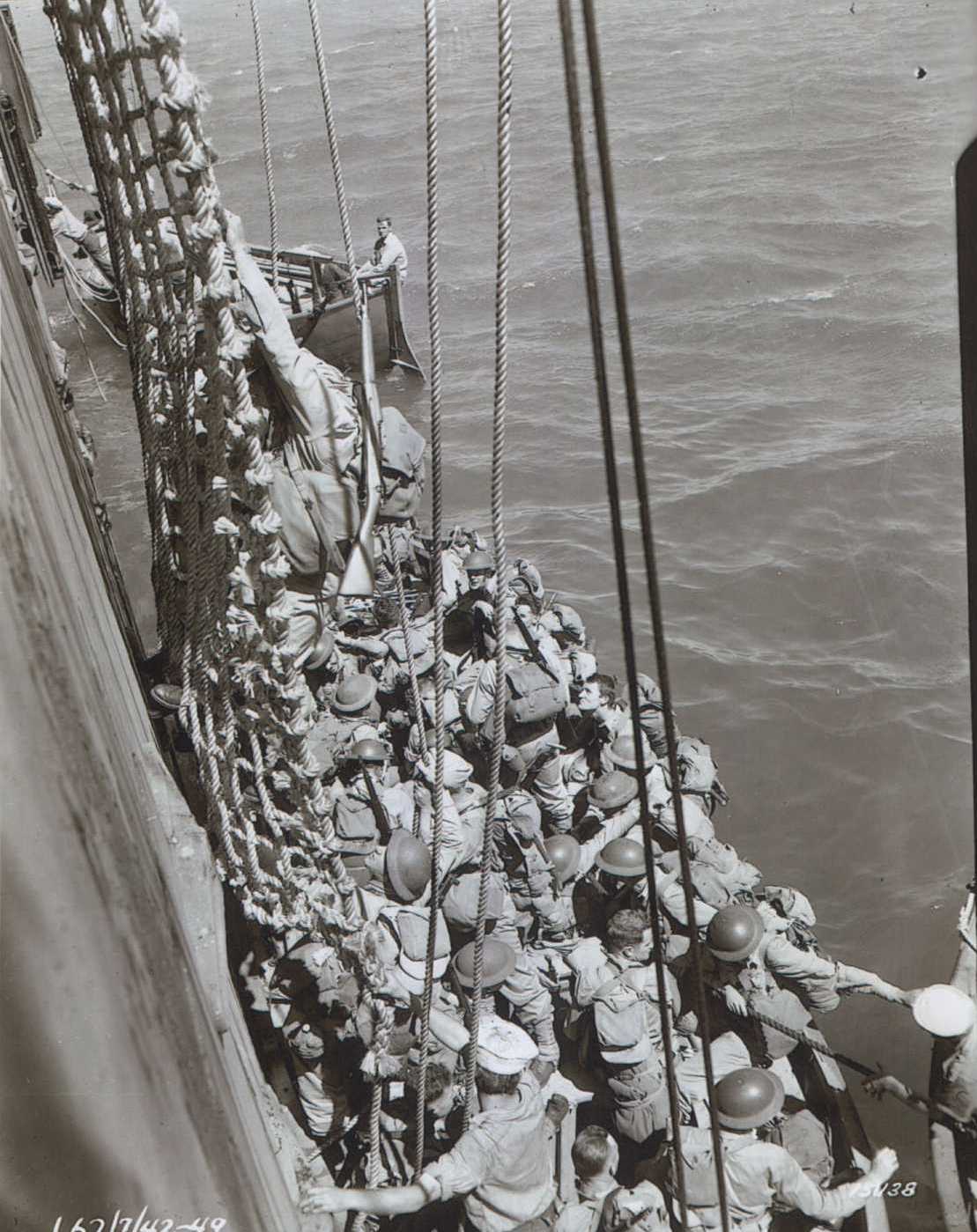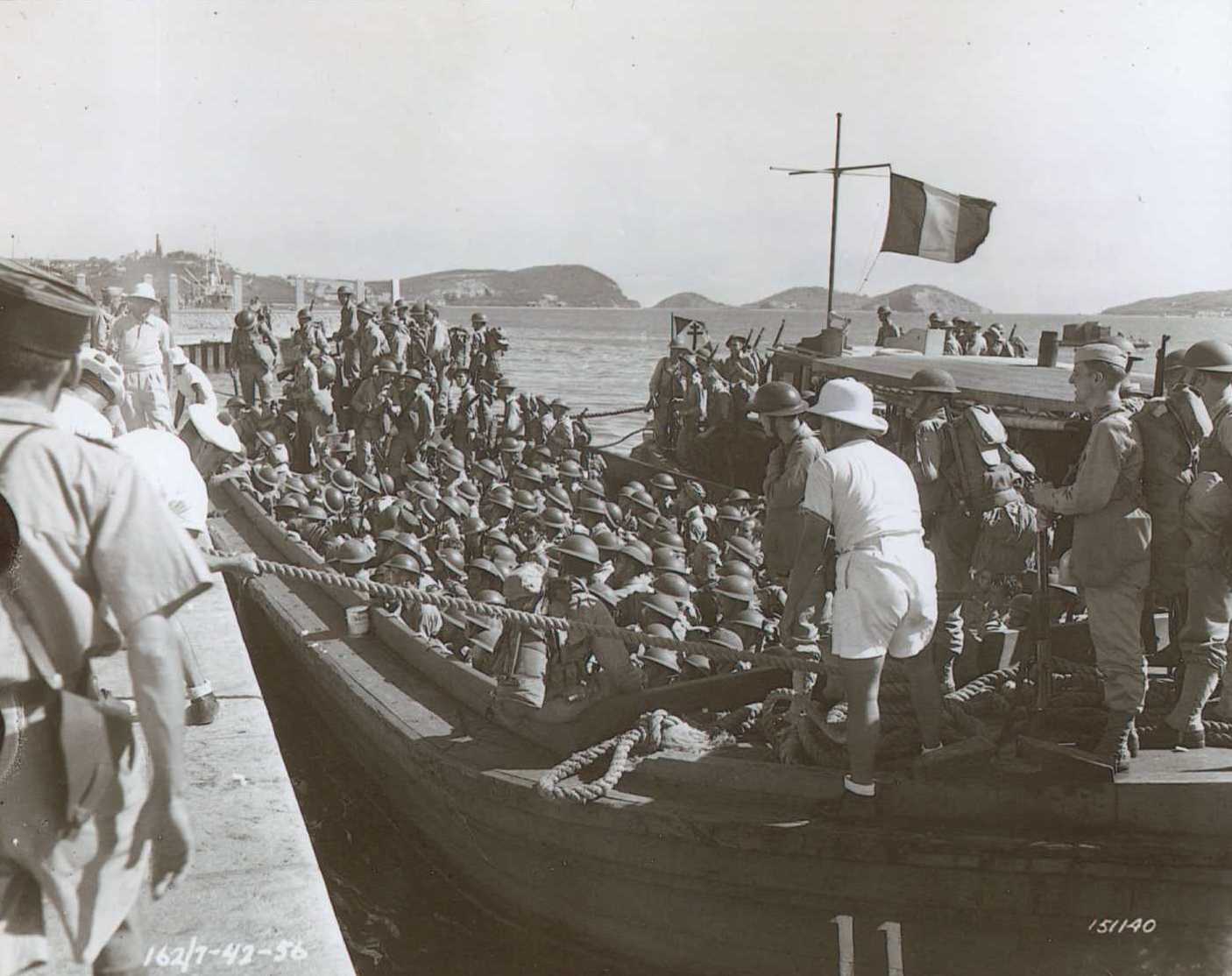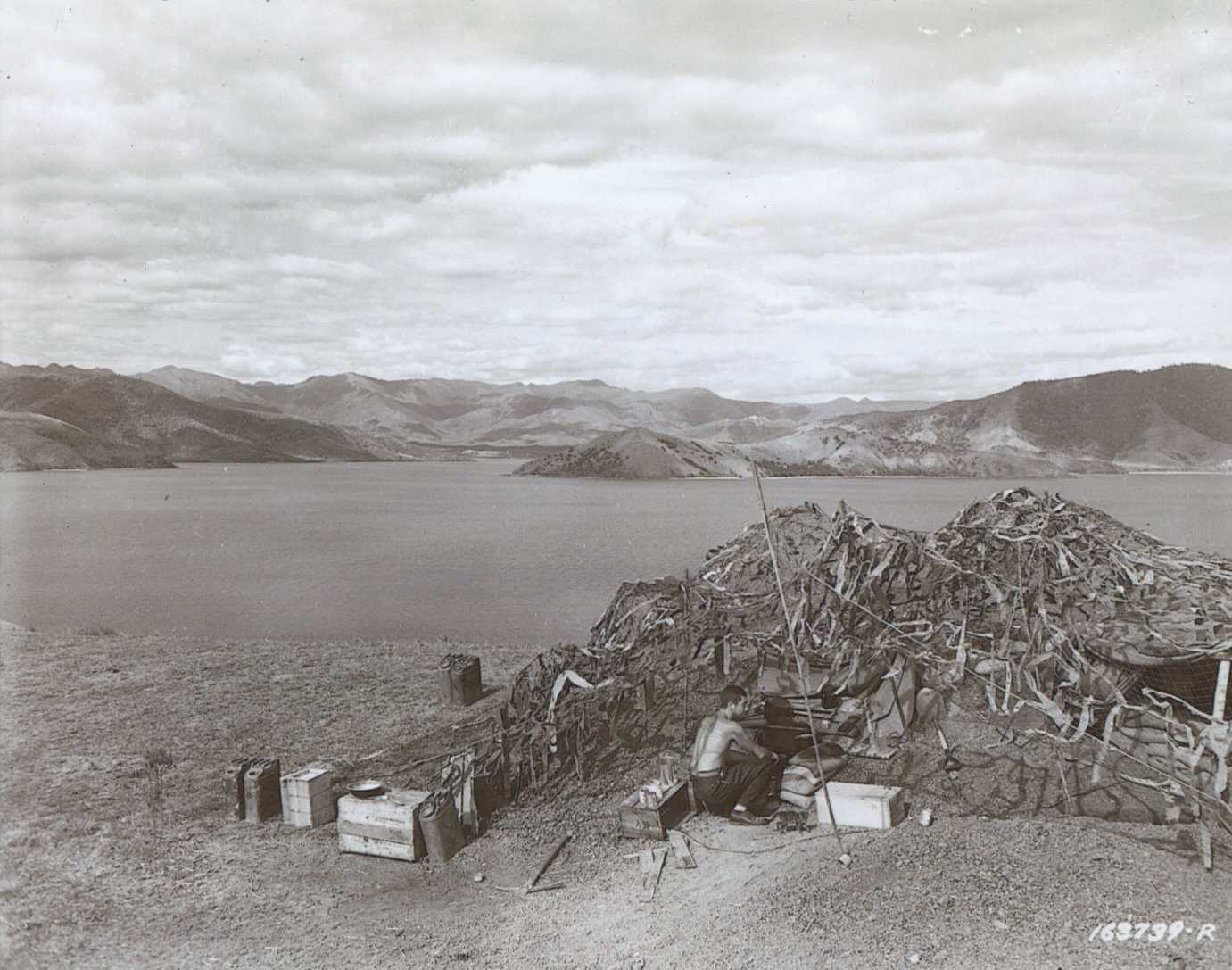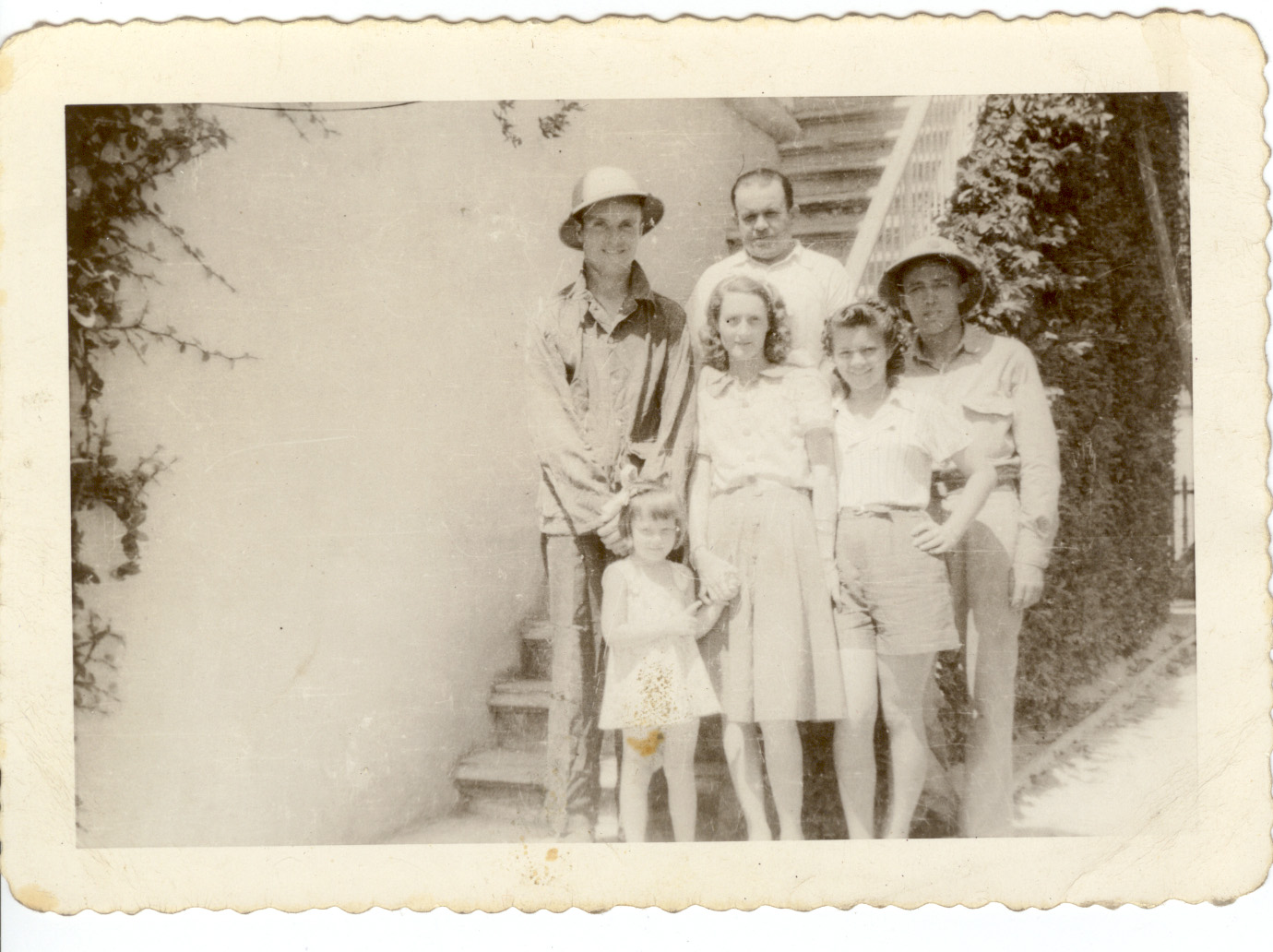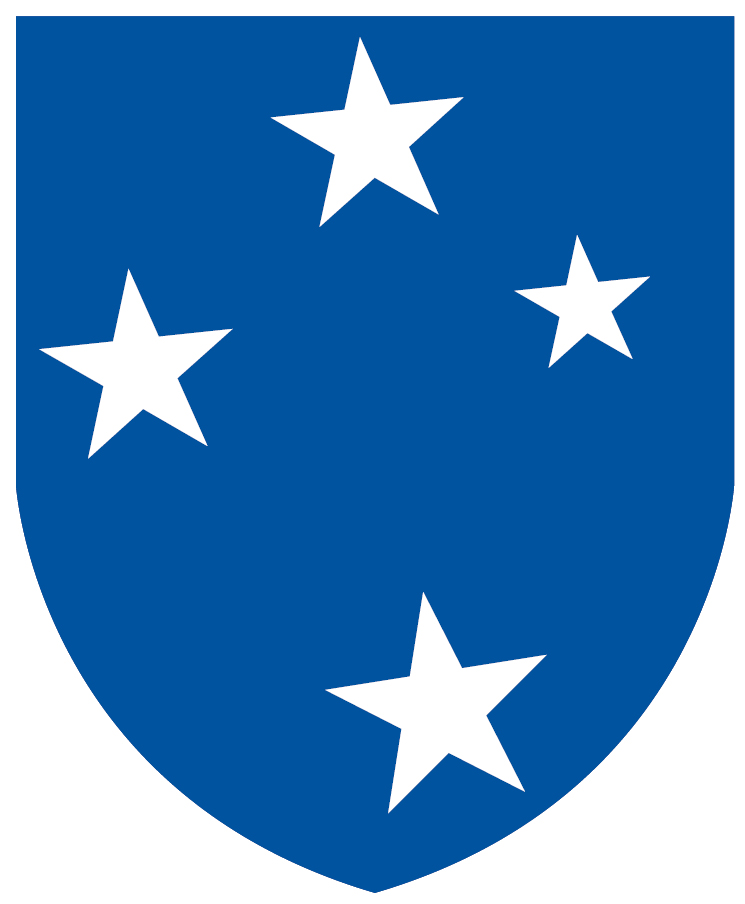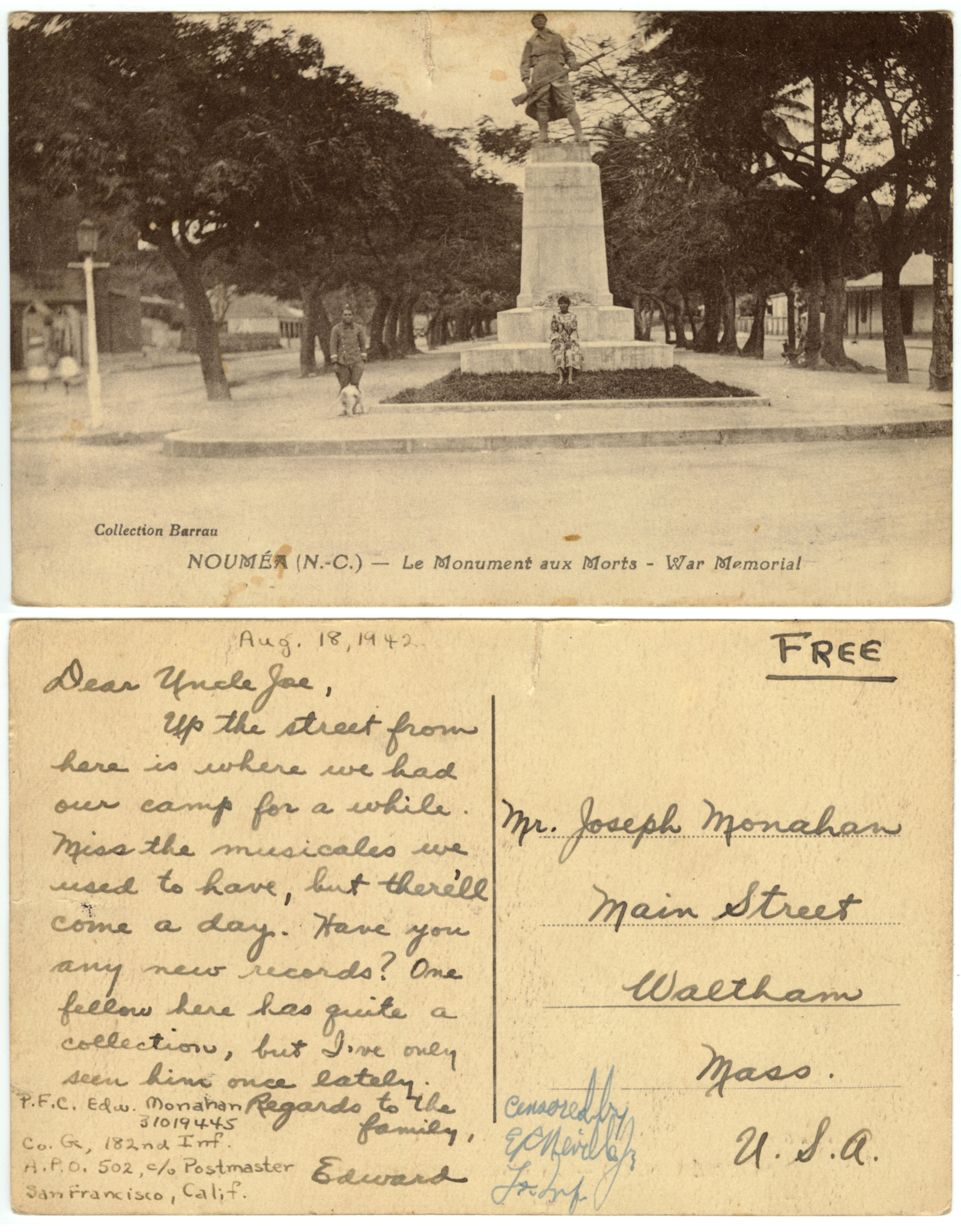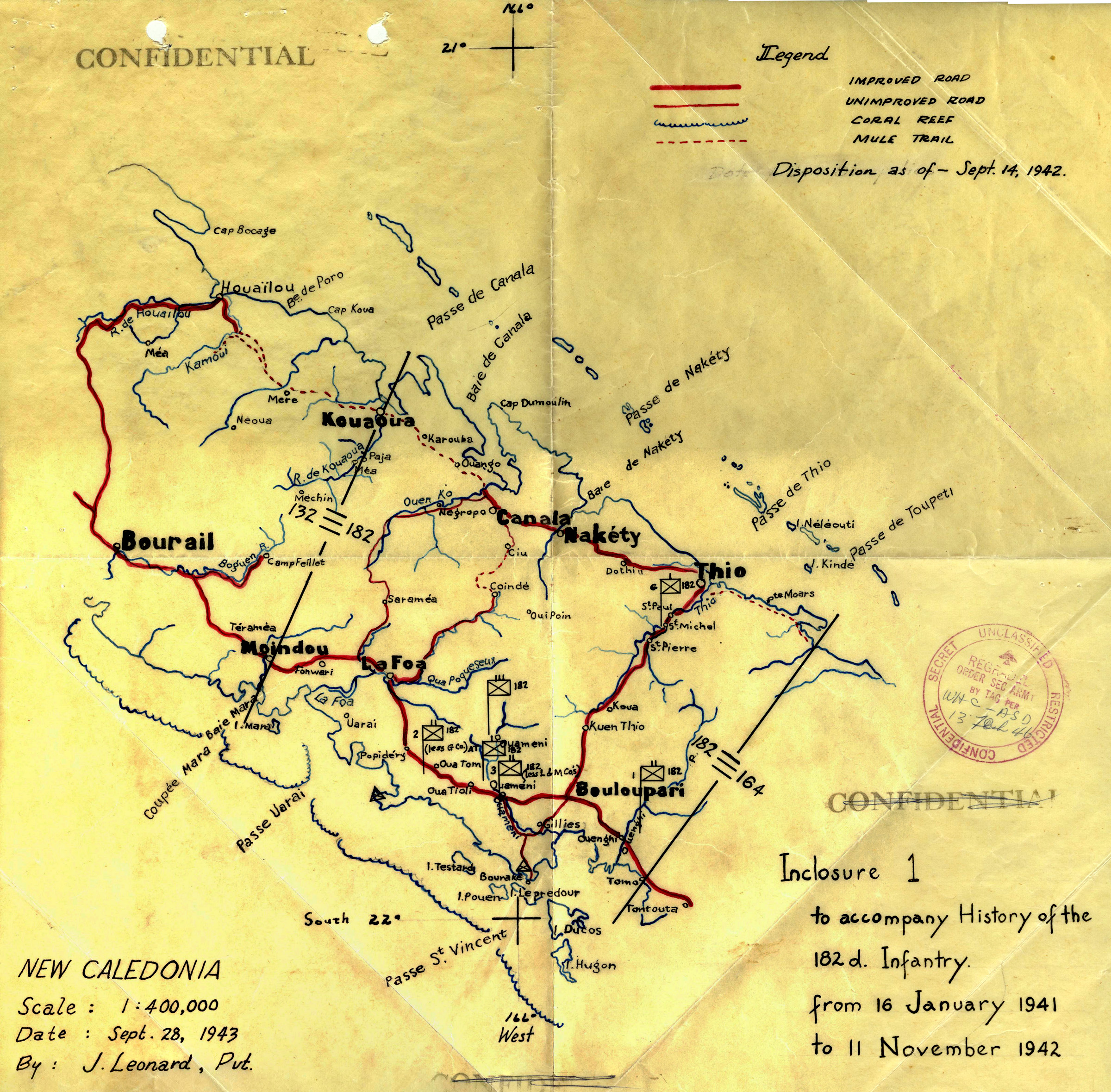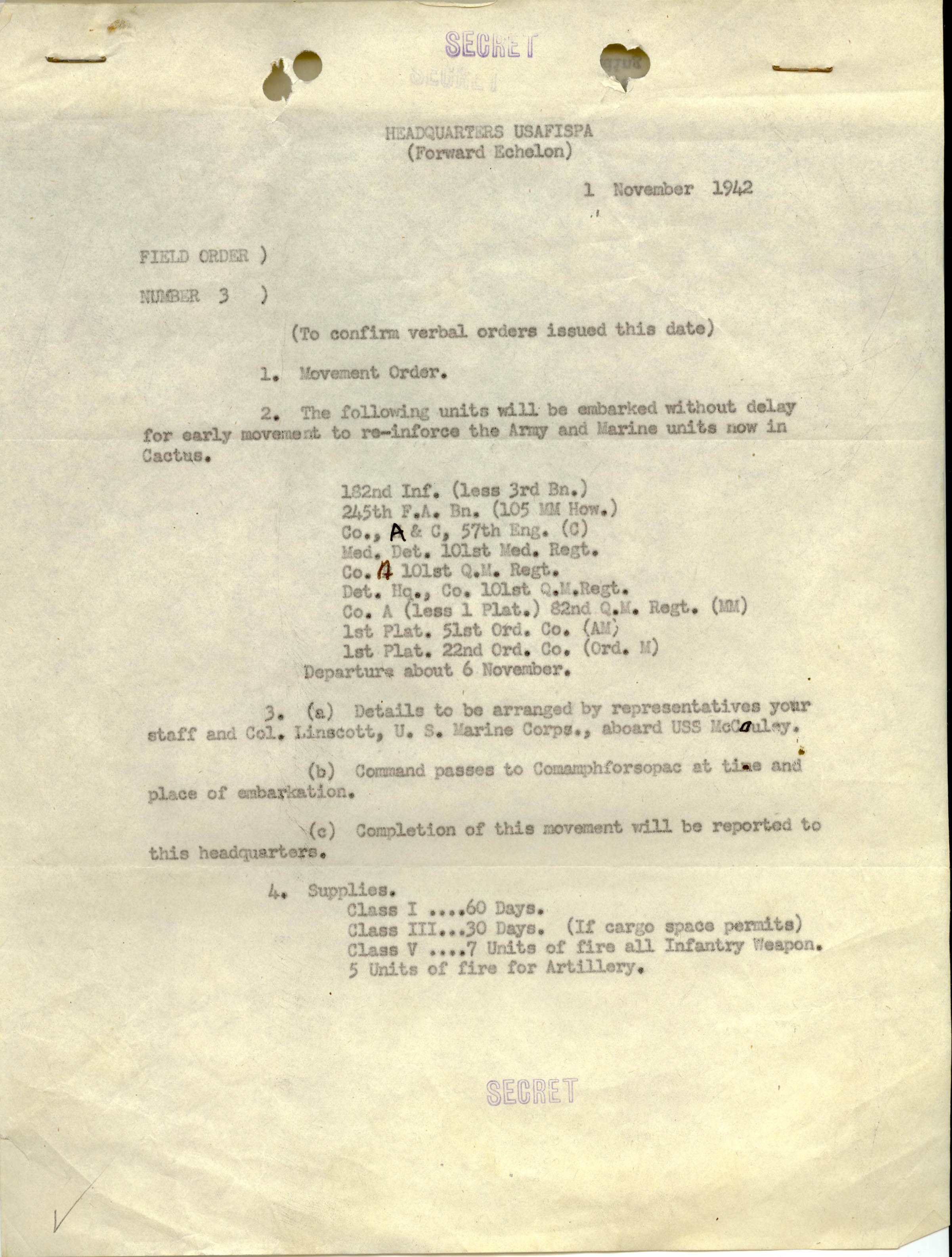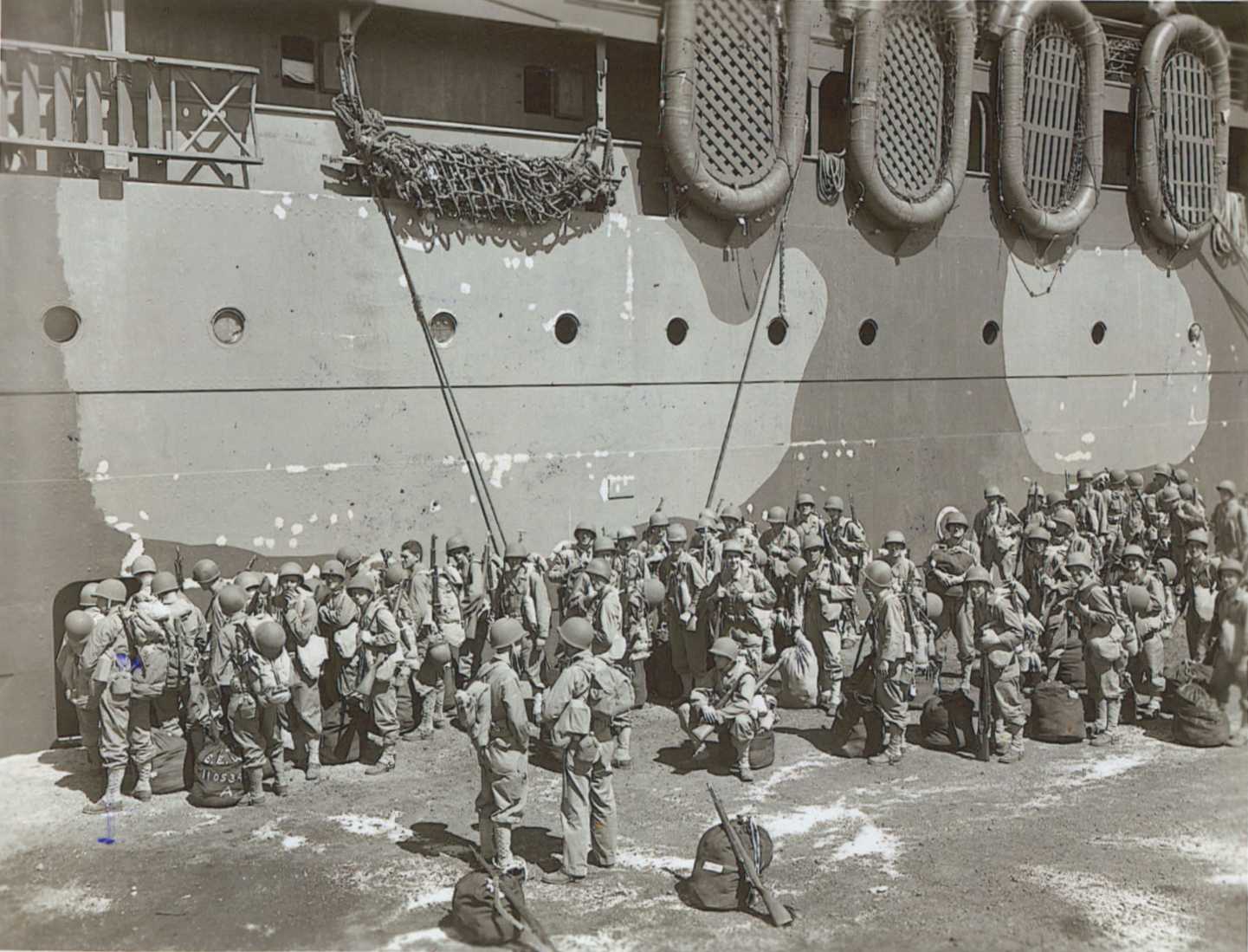On 12 March 1942, 48 days after leaving New York, Task Force 6814 at last arrived at its terminal stop: Noumea, New Caledonia (see Google Map here). This French territory was a critical stop on the supply route to Australia, and also boasted precious raw minerals, a harbor, and an airfield. The Japanese had their eyes on it, and the existing French and Australian defenses on the island were minimal. The soldiers of Task Force 6814 were to defend the island from possible attack. Upon arriving at Noumea, the soldiers of the convoy were quickly prepared for debarkation, lest the Japanese catch them helpless aboard ship. As the docks did not have water deep enough for the huge cruise liners, the men were offloaded into smaller vessels for the trip to shore. In Photo #1, men scramble down cargo nets hung over the side of the Argentina. In Photo #2, Company G pulls up to a dock and begins to unload. Note that the men are still wearing old “doughboy” helmets.
The men of Task Force 6814 rapidly made their way to shore, and dispersed inland. The scenery of this Pacific island was striking. In Photo #3, an artillery post of the 244th Coast Artillery, overlooks a vast panorama of ocean and mountains. The mission of what was called the United Forces in New Caledonia was to defend Noumea and its excellent harbor, the airfield at Tontouta, and two unfinished airfields elsewhere on the island. The 132nd Infantry was assigned to defend the northern portion of the island, while the 182nd was assigned to the south. Company G was initially stationed just outside the pleasant city of Noumea, sometimes called the “Paris of the Pacific.” As in Australia, they had the chance to meet the locals, though this time, for more than a week. In Photo #4, Ed Monahan (left) and John Mulcahy (right) pose with a local family named DuFours. Both men remained in touch with the New Caledonian family by mail throughout the war. Language was a problem for many of the soldiers while stationed on New Caledonia. The soldiers had varying levels of education, and suddenly found themselves thrust into the middle of a French speaking society. Some, like Monahan, spoke French, and helped others to communicate.
In early April the 164th Infantry Regiment, of the North Dakota National Guard, joined Allied forces on New Caledonia. These units were combined, along with artillery, medical, military police, HQ, and other supporting units, into a new division. There was some debate over what to call the new unit, until one of the soldiers abbreviated “Americans in New Caledonia” into “Americal.” The division became only the second “named” division in the Army, and the only one activated on foreign soil during the war. For its insignia, the Americal adopted the Southern Cross constellation , a familiar companion in the night sky on the bottom of the world. The distinctive blue patch with white stars can be seen in Photo #5.
The men of Company G settled into a routine of guard duty, patrols, and training. The only way to communicate with loved ones thousands of miles away during World War II was by mail. The postcard seen in Photo #6 was sent home by Ed Monahan, to his uncle back home in Massachusetts. It shows a scene “up the street from where… we had our camp for a while.” Military mail was censored: note the scribbled blue signature of the officer who reviewed it.
Two important naval actions in the spring of 1942 eased the fear of invasion of a Japanese invasion of New Caledonia. In the Battle of the Coral Sea (April) a Japanese task force steaming towards Allied territory was stopped and turned back by the Navy. In the Battle of Midway (May) the Japanese carrier force that had decimated Pearl Harbor was routed by the Navy, losing four precious aircraft carriers. By the fall of 1942, units of the Americal Division were dispersed all over New Caledonia, manning defensive positions and outposts, and training for future combat. Company G was situated off on its own towards the northeast coast, apart from the other major concentrations of 182nd strength. The map of New Caledonia seen in Photo #7 shows the 182nd sector as of September 1942. (Note that the map was scanned in several sections, and digitally assembled- some sections have remaining discoloration from that process).
While the Americal was safely tucked away on New Caledonia, off on the front lines of the war, a fierce battle had been raging for several months. American forces had invaded the island of Guadalcanal, in the Solomon Islands, in August 1942, and were still heavily engaged with Japanese forces on land, sea, and air. The Americal Division was one of the units tabbed to reinforce and replace the war weary Marines on that jungle island. In the report shown in Photo #8, Guadalcanal is referred to by its code name: “Cactus.”
In October, the 164th Infantry landed on Guadalcanal, and was quickly engaged in the brutal struggle against the Japanese. In the first week of November 1942, the 182nd Infantry boarded ships at Noumea for the journey to the Solomon Islands. In Photo #9, soldiers of Company A line up to board a transport ship. After 10 months in the Pacific, the 182nd was finally about to enter a combat zone.
Next Chapter: Guadalcanal: Welcome to the War

